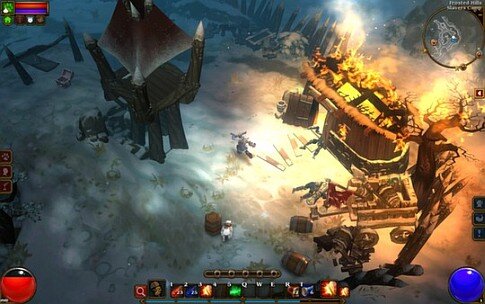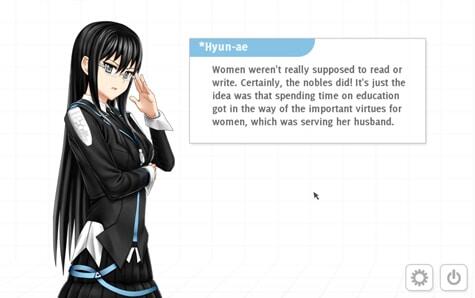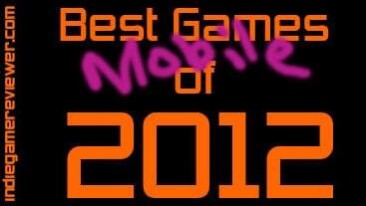Indie Game of the Year 2012
At IndieGameReviewer.com, we began compiling our Top Ten indie Games 2012 edition sometime around June. This is because we wanted to remember the impact of the games that came out in the first half of the year, and from that point forward, we looked at every game that crossed our path with the same consideration, regardless of its size.
In compiling the final list, we try to avoid doubling up in genres, for example having two shmups or puzzlers, platformers or FPSes. In fact, we look for things that defy or expand genre definition and push the medium forward. We look at design, ludic techniques for narrative, unique game mechanics and of course final implementation – do these games deliver on their promise? Then we look at the experience for the end-user and the overall assemblage to see how those various parts come together as a whole. Is it effective? Challenging? Thought-provoking? Fun?
For those who want to jump right in without our contextualization or other commentary here are the quick access links (also found at the bottom of each page):
Quick Jump
- #10
- #9
- #8
- #7
- #6
- #5
- #4
- #3
- #2
- #1
- Honorable Mentions – 1
- Honorable Mentions – 2
- Honorable Mentions – 3
- Most Anticipated Indie Games for 2013
We feel that though they are just as meriting of our dollars and attention, we as a site do not need to draw your attention to those titles with much larger P&A budgets and so we exclude such obvious and truly excellent standouts like Torchlight II, The Walking Dead and Orcs Must Die 2 for the same reason we excluded such indies as Witcher 2 and Minecraft in previous years.

Also, games like Spelunky, which saw a much wider release in 2012 via the XBLA platform with some updates, was technically released in 2009, and in spite of these updates, was essentially the same game rather than a remake and thus fell out of our strict range in release accounting.
This year we also helped ourselves narrow things down by moving mobile games into their own list, and even put other excellent XBOX Live Indie Games like Gateways on our list over at our sister site XBLIGR.com. Again, we had to find ways of breaking down the absolutely enormous explosion of titles into something moderately more manageable.
While there are some titles we simply could not ignore, we also endeavored to add a couple that you probably have not heard of, or played, even if you do spend too much time in the indie game space. So again, though some of the titles on our very respectable Honorable Mentions list are world-class, nonetheless, we have to boil it down to ten that we feel defined the year’s releases.
On Narrative Excellence in 2012
2012 also revealed a strong showing of new forms in which the very definition of interactivity and gameplay are challenged and questioned. These are primarily interactive narrative pieces where the exploration into the world’s environment is the primary incentive for “play”. Titles such as Journey, Dear Esther, Little Inferno (a personal favorite), Home, Analogue: A Hate Story and Dys4ia have an experiential path that is defined clearly by the need of the narrative rather than of gameplay structures of rewards, incentives and punishments.
(Note that we exclude adventure and puzzle titles like Resonance, Primordia, The Journey Down or Botanicula from this classification as they are more puzzle-driven. Yes, this is treading an increasingly very fine line, as the likes of Walking Dead are far more game-like with time-based actions and true failure states.)

Yes, the argument could be made that Kan Gao’s To The Moon (2011) was of the same ilk, and it would not be incorrect. However, as the number of narrative or interactive storytelling games increased substantially this year, we also strive to showcase and honor the titles that have gameplay at the core of its reflexive design choices. The gains made in the medium of games has been substantially different from this year and the last; It was only a year ago that some prominent game critics were very vocal about how narrative had no place in games whatsoever.
To be crude and drag out the most recent definition of a game from Wikipedia:
“A game is a system in which players engage in an artificial conflict, defined by rules, that results in a quantifiable outcome…Key components of games are goals, rules, challenge, and interaction. Games generally involve mental or physical stimulation, and often both. Many games help develop practical skills, serve as a form of exercise, or otherwise perform an educational, simulational, or psychological role.”
[Source]
At this point we could probably induce some Jaron Lanier, Ian Bogost or James P. Carse, but let’s keep it light, kids.
The above examples are not so much games as deep experiences that traditional linear media cannot deliver, and as IGR writer Tanya Kan explains when speaking on thechineseroom‘s “Dear Esther“: “a scripted experience, but one that leaves behind a mark so indelible because it presents a dream as merciless as it is full of humanity. It is what many an artwork strives to leave in its viewers and participants.”
In fact this emergent genre made such an impact this year, that IGF introduced a new award category in “Narrative Excellence” to better accommodate the new space required to address this nebulous turf. As the IGF official statement noted:
“It was clear that there was something special about this year’s lineup of games in particular that made the absence of a Narrative category especially conspicuous…it’s a category to recognize “innovation, quality, and impressiveness of storytelling in a game, including, but not limited to, scenario, plot construction, story, dialogue, and other major factors.”
And yet the question arose as to whether or not they are proper games, wherein a game requires a certain skillset to be developed and a defined failure state. We wanted to make that distinction as outlined in the title; these are the top indie Games of 2012, but making that distinction was not without controversy, nor do we exclude these titles from serious consideration and praise for what they introduced to the discourse.
What follows is a spectrum-wide sampling of the most cutting edge, well-implemented, breakout design, genre-expanding games of 2012 based on the (not unanimous) consensus of the IGR writing group, comprising over ten writers in various countries from the start of the year to very bitter end.
Acknowledgements and final notes
While we’re here, I should thank all the IGR contributors (in alphabetical order) who contributed so much throughout the year and to this compilation: Bill Whorton, Callabrantus (assistant editor), Kit Goodliffe, HappyWulf, MJ Brune, Patrick Bartholamew, primofimo, Stanley Jackson, Tanya “Darklights” Kan, tcrandall and Zombiegrl. Special thanks to Ben Cross for our new logo and other graphical elements.
Whether you agree or disagree, we sincerely invite your input and commentary. We are all in this journey together and are always learning about games, even as we forge ahead into the amazing worlds being spread out before us every day.
About navigating the list: to access any game’s official site, click on its title, and to read our original review, see the link included within the blurb for each game.
Enjoy and thanks for reading IGR.
Indie-Game-Freak
Editor-In-Chief
See our Independent Game of the Year Lists for Previous Years
Enough psychobabble, on to the Best Indie Games of 2012! >>>
Top 10. 9. 8. 7. 6. 5. 4. 3. 2. 1. HM1 HM2 HM3 MA



Minecraft, Terraria, Proteus?
Thanks for your comment! Terraria was actually released in 2011, and we named it our number 3 title in our Best Indie Games list for 2011. Minecraft was also officially released in 2011. Due to its massive popularity, we felt it didn’t need the nod from us that year. You’ll also notice that while Proteus isn’t in our Top Ten for this year, we did give it an Honorable Mention.